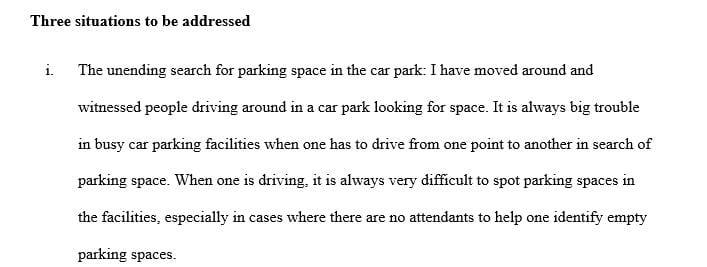Develop your individual project to bring a product or service into existence.
In this course, Concept and Product Development, you will develop your individual project to bring a product or service into existence. You should not start with your solution, instead start with a problem someone is having that they seem likely to pay you to solve it. These assignments will help you work through processes to validate that a) the problem is prevalent and b) people are willing to pay for a solution .
There are 3 deliverables (Weeks 2, 5, and 7) for this project. Assignment 1 gets you started by asking you to identify 10 pain points, then narrow them down through a set of primary research steps. Assignments 2 and 3 will help you to take 1 of these ideas through a design process to get it launched as your final project due in Week 7. Projects are subject to faculty approval before continuing to Week 3. The outcome of the course project will be a prototype if you are developing a product, or a web page if you are developing a service. You will need to include a picture of your prototype for your product, or a link to your webpage for your service as part of your final project.
For prototype assistance, please see Tampa Hackerspace. For service webpage services, please see webs, wix, weebly, google sites, blogger, wordpress, Etsy, Facebook pages, and more.
Here are the details of each assignment:
Concept Report
Review in your readings, Sanders’ “Learn by Doing” concept, Belz’ “Where do new products come from,” and Kelley’s notions of “enlightened trial and error.”
Write down every time you notice a situation that you think you can improve (may result in the development of either a product or service). For example, my kids are tracking lots of dirt into the house, so I’m spending too much time hauling around my vacuum cleaner. Potential products for this situation could be self-cleaning shoes, better doormats, improved vacuum system, auto cleaning flooring in front of door, etc. Your list should contain at least 10 situations that you would like to improve.
Next, use your list of situations to generate at least 2 customer pain points for each situation. For example, 1) I hate it when I step in the gritty dirt my kids have tracked in. 2) I hate hauling a heavy vacuum cleaner to clean up the mess my kids track in on their shoes. 3) I hate it when my kids forget to wipe their shoes.
Choose at least 3 of the top situations that you would like to address. Make sure they are something that you have the expertise (or can partner with an expert) to address. For instance, there’s not much use in choosing a high-tech problem such as home security monitoring if you have no clue about such things and don’t know any experts who would partner with you.
Conduct primary research to determine which of the situations and resulting pain points from your list are prevalent, and whether people would be willing to pay for a solution. Use data to identify and narrow your target pain point. Here’s how:
Develop 5-10 primary research questions about the situations and pain points. Use the questions to determine a) how prevalent the pain point is, i.e. how many people share it, b) how do they deal with them now, c) will they pay for a solution, d) how much would they pay? Include your research questions in your report.
Use at least 2 of the following methods to conduct your research:
o Do 5-10 Interviews (phone or in-person). Include your questions in your report.
o Send 10-20 Surveys (you may use Facebook surveys, email, free Survey Monkey, or Google Drive forms; you may survey the class if they are willing). Include a valid link to the survey in your report.
o Make 1-2 Observations of customers dealing with the situations now (in their regular lives).
o Search the internet for complaints around these situations or pain points.
5. Analyze data by creating a content analysis table of 2-5 complaint “themes” found for each situation/pain point and how many times the theme was mentioned. Include quotes or other relevant data from research. Organize survey results and use graphs to summarize data to support your conclusions.
6. Narrow your top 3 situations to the top 1 pain point you will base the rest of your project solving. Write 1 concluding paragraph stating what your pain point will be and why. Use the following questions as guidance on key information to explain why:
How prevalent is the pain point?
How severe did your research show the pain point was?
What is the most common way to cope with the issue?
How likely they people pay you to solve it?
How likely are people to adequately pay you to solve it?
What is a minimum viable solution people would tolerate trying in order to start solving it?
7. Before going any further with your project, you must determine whether the product or service already exists. If a Google search doesn’t turn up a similar product to one you are considering developing, then conduct a preliminary patent search to make sure you don’t infringe on an existing patent. The following links explain how to conduct your own search.
https://www.entrepreneur.com/
https://www.uspto.gov/video/
Include information in your report on existing products or services that are similar to yours. What similar patents did you find? Is your concept still viable? Why or why not? How will your product or service be different (BETTER!) than the competition?
8. List the references you used.
Deliverable for Week 2 Project Submission:
Solution preview for the order on develop your individual project to bring a product or service into existence.
APA
1122 words
